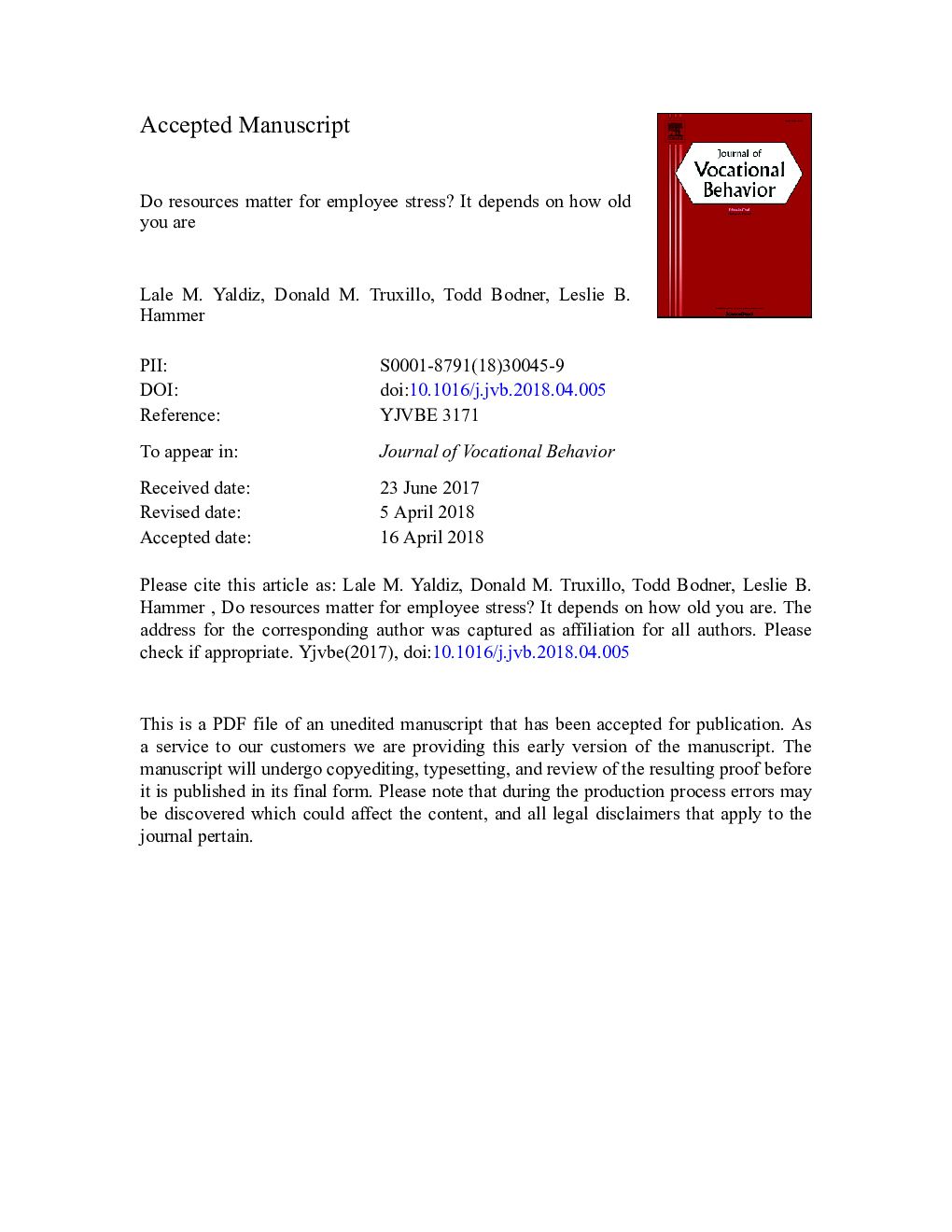| Article ID | Journal | Published Year | Pages | File Type |
|---|---|---|---|---|
| 7247201 | Journal of Vocational Behavior | 2018 | 49 Pages |
Abstract
This study sought to understand the age-based differences in the usefulness of job resources in relation to employee stress. We extended Conservation of Resources theory by integrating two lifespan development models (Selection-Optimization-Compensation and Socio-emotional Selectivity theories) to argue that job resources would be differentially beneficial - or harmful when lacking - to the stress of older and younger workers. Utilizing time-lagged data, we examined the moderating role of age in the relationship between baseline work-related resources from the job (skill variety), supervisor (leader-member exchange), and organization (procedural fairness) and perceived stress at the 12-month follow-up in a sample of U.S. construction workers (Nâ¯=â¯243). As hypothesized, our findings indicated that the relationship between these three job resources and perceived stress was stronger for older workers. Specifically, when resources were high in the workplace, both older and younger workers reported lower levels of stress. However, when these resources were low, older workers experienced greater stress compared to their younger colleagues. These findings support that age is a boundary condition of job resources - stress link, and highlight the importance of understanding the needs and motivation of employees of different ages is key to maintaining worker well-being.
Related Topics
Social Sciences and Humanities
Business, Management and Accounting
Marketing
Authors
Lale M. Yaldiz, Donald M. Truxillo, Todd Bodner, Leslie B. Hammer,
